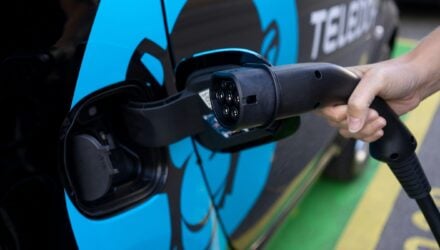
Nissan has revealed sales data for the all-new Micra in a fascinating format, showcasing the exterior colours that customers are choosing. It reveals classic Enigma Black is currently number one, running neck and neck with Gunmetal Grey.
At the same time, the brand has also released historic information on what Micra buyers have picked in the past. Shown as striking multi-coloured graphics, together they provide an intriguing insight into how the much-loved Micra’s colour palette – and consumer trends – have changed over more than 15 years.
2017: Back to black after 10 years

The all-new, fifth-generation Micra went on sale in March this year. As the image (above) reveals, the number one customer choice is a tie, with Enigma Black and Gunmetal Grey equal on 21% – each approximately one in five of all cars ordered across Europe.
It’s a return to form for black, as the car was also the number one seller exactly 10 years ago, as the historic sales data reveals (see below).
Glaze White completes the current top three (14%), and immediately below are Nissan’s vibrant new high-impact shades of Passion Red (11%), Energy Orange (9%) and Power Blue (7%). Together they account for more than one in four of all Micras sold to date.
The Micra’s expressive design, coupled with the extensive personalisation program, is a key attractor for customers. The program allows for contrasting shades to be added to the bumpers, doors, wheels and door mirrors. In addition, elements of the seat, door trim and dashboard can be modified with interior personalisation.
More than 100 combinations are available. Affordability has been key to demand, with customers spending on average just €400 to get the personalised design they want.
Today’s colour choices strongly contrast with the Micra’s paint palette and customer choices from key points during its lifetime.
For example, as the 20th century came to an end, the world was focused on the new millennium and what the next 100 years might look like for humankind. As a result, there was huge interest from car buyers in futuristic metallic colours, with various silver shades accounting for one in five of all Micras sold.
2003: Blues and silvers dominate demand

That trend for futuristic silvers was still clearly visible in 2003 (above), a year after the launch of the third-generation Micra. Also popular was a bright new colour, Cornflower Blue, which was available for the first time. It had featured in many of the promotional materials for the car, illustrating how advertising can influence customer choice.
However, the Micra’s colour catalogue was still very conservative. There was nothing particularly bright or vibrant, other than two shades of green. Note also the low volume of white cars sold… although change was on the way.
2007: A broader range of Micra colours

The Micra received design and engineering revisions in 2007, and with them came a new and wider range of colours. The image (above) shows how sales were split more evenly than before across the 12 options. Black was the best-seller, just as it is today.
The blues and both greens have all been deleted, and there are now two reds. White is starting to grow in popularity, reflecting social trends around consumer technology – for example, demand for the Apple iPhone.
2012: ‘The Apple Effect’ in full swing

By 2012 (above), Nissan was selling the fourth-generation Micra. Most obvious is huge rise in sales of white – ‘the Apple Effect’ in full swing – and the massive decrease in sales of black cars.
Blue has made a comeback, with three different versions on offer. Orange accounted for a tiny proportion of demand – a situation which has completely reversed in 2017 with the all-new Micra. Today it accounts for 9% of sales.
How does Nissan choose its colours?
Colour development on the all-new Micra began at the same time as the design team was working on initial sketches of the vehicle – around five years ago.
Nissan always strives to use colours that are exciting for the customer, but which also enhance the character / design of the model. Historic sales data – such as revealed above – is always analysed. In a segment as competitive as the European B-hatchback, Nissan’s belief was that customers would be open to more daring colours – hence the launch of Energy Orange and Pulse Green.
Priyanka Gaitonde, a Senior Colour Designer at Nissan Design Europe, commented: “The priority for the Micra right from the start was to put the customer at the heart of the vehicle and showcase the model’s bold, expressive and sporty design.”
She continued: “One of the hero colours chosen was Energy Orange. Orange is already a prominent Nissan colour – for example, on the Nissan GT-R – though the particular shade selected by the design team sought to represent the optimistic character of the all-new Micra.”
So what of the future? Colours on offer will continue to evolve with advances in paint technology, supporting wider social trends influencing consumer choice. Black may be popular again, but industry predictions indicate that there will be a rise in colours with a high chromaticity. This is a measure of a colour’s purity, and often refers to the percentage of white, black or grey present in it. Colours with a high chromaticity appear very vivid and present a purer representation of it.
Demand for personalisation is also expected to increase. In many fields consumers now demand to be given the opportunity to shape the products they buy. Research has also found customers are willing to pay more for a customised product if they can be actively involved in the creative process.


















